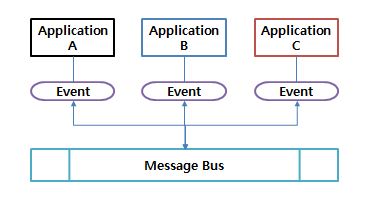This is the first enterprise integration pattern concept – Messaging.
Messaging
The problem statement for this pattern is how do two systems which are not aware of internal processing logic of each should exchange information provided the two systems are bound to work together in the E2E landscape.
The solution of this problem lies in the integration pattern to be used. Ofcourse, you can use a direct WebService, RMI, or any other Java call to invoke the specific service but in today’s integration world where the requirements of integration includes – Reliability, immediately and configurability, direct P2P integration doesn’t fit in.
Hence the solution to the problem is to use an asynchronous messaging architecture as below:

The basic intention of using Asynchronous Messaging is sending a message and forget about the headache of managing, tracking and seeing if this is delivered. The underlying protocol and supporting framework takes care of the same.
Example of Asynchronous Messaging is Weblogic JMS, MQ etc. I normally work on Weblogic JMS which provides lot of features to support different aspects of Message.
The advantages of using the same are listed below:
- Reliability
- Asynchronous Mode of communication
- Loose coupling between Source and Target Applications.
- Unit Testing/Integration Testing becomes easier as you can test each application standalone much more easier than it was when tightly coupled.
I believe this mode of communication is and will become the major mode of communication and new and new ideas will be popping around the same like – Cloud Services to support this mode of communication etc.
Please share you ideas and thoughts around this. Hope you like it!
You can refer to Enterprise Integration Pattern Overview as well.
[…] Messaging […]